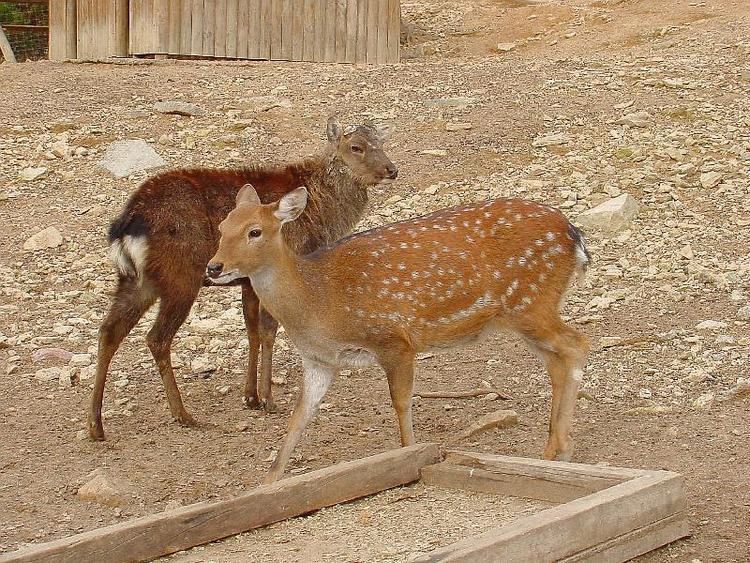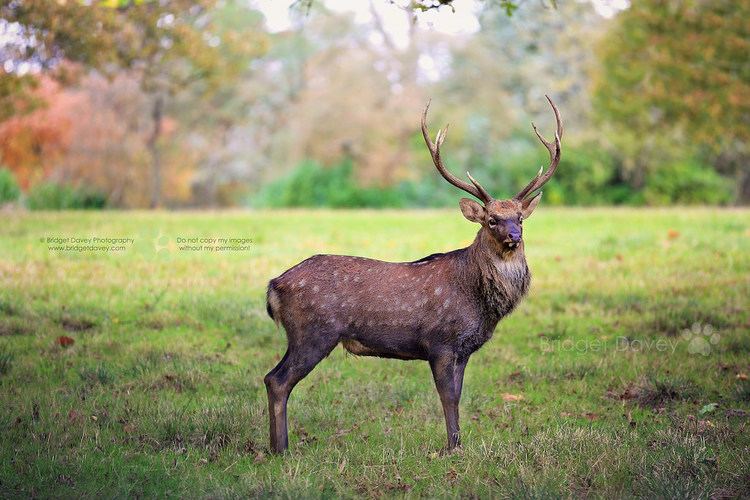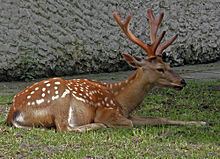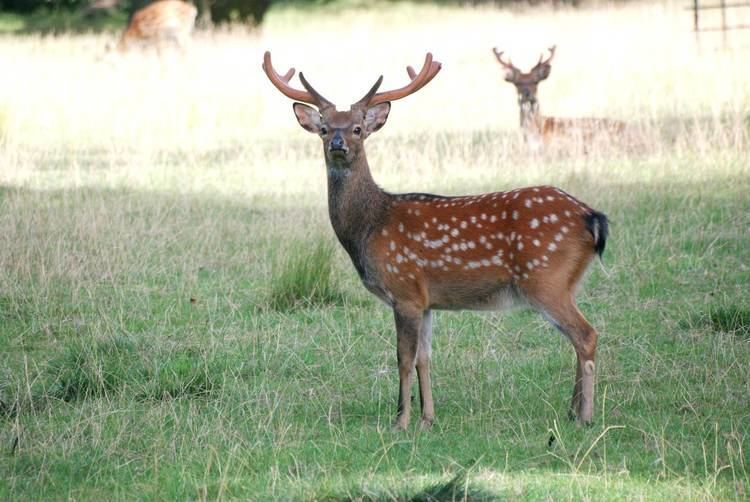Family Cervidae Rank Subspecies | Phylum Chordata Order Artiodactyla | |
 | ||
Similar | ||
The Manchurian sika deer or Dybowski's sika deer (Cervus nippon mantchuricus or Cervus nippon dybowskii ) is a subspecies of deer, the largest of the 14 subspecies of sika deer.
Contents
Geographic range

The Manchurian sika deer was formerly found in Manchuria (northeastern China), Korea, and the Russian Far East. Today it is likely to be extinct in China and Korea, but about 9,000 individuals still live in the sparsely populated areas of Primorsky Krai in Russia. There are many captive breeding programs in Europe, for hunting and meat, including Poland.
Description

Body length is 155 cm (61 in), and the tail is up to 20 cm (7.9 in) long. The height at the withers is 75–110 cm (30–43 in). Females weigh up to 80–90 kg (180–200 lb) and bulls up to 110–160 kg (240–350 lb).
Reproduction
Pregnancy lasts up to 221 days, and one young is born.
Etymology

Both the subspecific name, dybowskii, and the common name, Dybowski's sika deer, are in honor of Polish naturalist Benedykt Dybowski, who discovered this deer when he was exploring Siberia after completing his katorga term.

